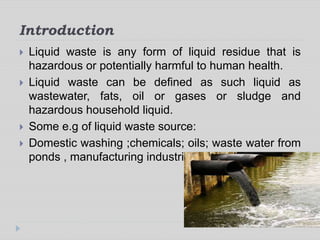Some Known Details About Reclaim Waste
Table of Contents4 Simple Techniques For Reclaim WasteHow Reclaim Waste can Save You Time, Stress, and Money.The smart Trick of Reclaim Waste That Nobody is Talking AboutSome Ideas on Reclaim Waste You Need To KnowHow Reclaim Waste can Save You Time, Stress, and Money.
Domestic sewer waste refers to the waste and items from a domestic septic container. The proper monitoring and disposal of residential sewer waste require liquid waste to be transferred to a sewer treatment plant where the correct techniques and devices are applied to cleanse and dispose of waste.
Commercial waste frequently includes possible risks, such as flammable materials or a mixture of fluid and strong waste products, and needs an extra innovative and comprehensive disposal procedure. The disposal of commercial waste commonly includes the purification of waste before transport to make sure secure and correct disposal. Hazardous waste is produced from by-products and drainage of commercial procedures and manufacturing.
This sort of waste can not utilize the exact same sewage management transport or processes as septic or industrial liquids. The hazardous waste management process requires the inspection and screening of fluid waste prior to it undergoes the disposal procedure (liquid waste removal). Drainage waste is the fluid waste that comes from runoff and excess stormwater in extremely inhabited locations or cities
Runoff waste can cause contamination and flooding if not dealt with properly. Making sure proper waste management can avoid calamities and minimize environmental damage.
An Unbiased View of Reclaim Waste
Get in touch with PROS Solutions today to discover concerning our waste monitoring and disposal solutions and the proper means to look after the fluid waste you produce.
(https://gravatar.com/maximum5d830db060)Do you know what occurs to your water when you end, purge the commode or drain the washing device? No? Well, it deserves knowing. This so-called 'wastewater' is not just an essential source yet, after treatment, will certainly be launched to our land, rivers or the ocean. Used water from bathrooms, showers, bathrooms, cooking area sinks, washings and commercial processes is referred to as wastewater.

water utilized to cool machinery or clean plant and tools). Stormwater, a form of wastewater, is drainage that streams from agricultural and metropolitan locations such as roofing systems, parks, gardens, roadways, courses and seamless gutters right into stormwater drains pipes, after rainfall. Stormwater flows unattended straight to neighborhood creeks or rivers, at some point getting to the sea.
Some Of Reclaim Waste
In Queensland, a lot of wastewater is dealt with at sewer treatment plants. Wastewater is delivered from residential or industrial sites with a system of sewers and pump terminals, referred to as sewage reticulation, to a sewage treatment plant. Neighborhood federal governments develop, maintain and operate most sewage treatment plants. Operators are accredited under the Environmental Management Act 1994 to discharge treated wastewater at an appropriate environmental requirement into rivers.
The Department of Natural Resources recommends regional federal governments concerning handling, operating and keeping sewage systems and therapy plants. In unsewered locations, city governments might over here require homeowners to set up specific or house sewer treatment systems to treat domestic wastewater from toilets, cooking areas, restrooms and laundries. The Department of Natural Resources authorises using household systems when they are confirmed to be reliable.
Most stormwater obtains no therapy. In some new subdivisions, therapy of some stormwater to eliminate trash, sand and gravel has actually begun making use of gross toxin traps. Wastewater therapy happens in four phases: Gets rid of solid matter. Larger solids, such as plastics and various other items wrongly discharged to sewage systems, are eliminated when wastewater is travelled through displays.
Wastewater then moves into large containers where solids settle and are gotten rid of as sludge. Grease and scum are skimmed from the surface area. Uses small living microorganisms knows as micro-organisms to break down and remove staying dissolved wastes and great particles. Micro-organisms and wastes are integrated in the sludge. Removes nitrogen and phosphorus nutrients that could trigger algal blossoms in our waterways and intimidate marine life.
A Biased View of Reclaim Waste
Nutrient removal is not available at all sewage treatment plants since it calls for pricey specialist equipment. Clear liquid effluent produced after treatment might still contain disease-causing micro-organisms - industrial wastewater treatment.

The majority of wastewater moves right into the sewage system. Under the Act, neighborhood federal governments administer authorizations and permits for eco pertinent activities (Periods) including wastewater releases that could have a regional influence.
See This Report on Reclaim Waste
Tracking gives valid details about water quality and can validate that licence problems are being satisfied. The details gotten via surveillance provides the basis for making water quality choices.